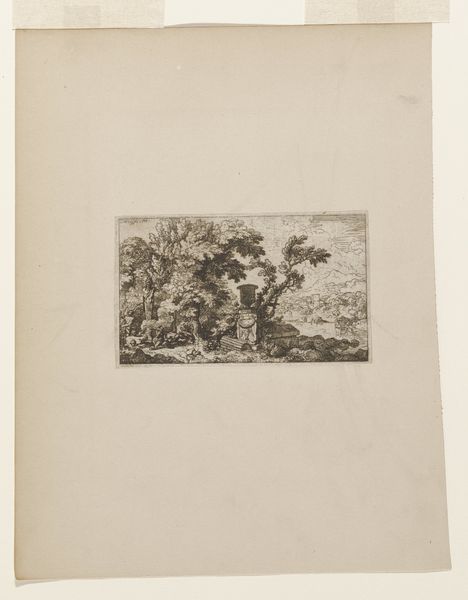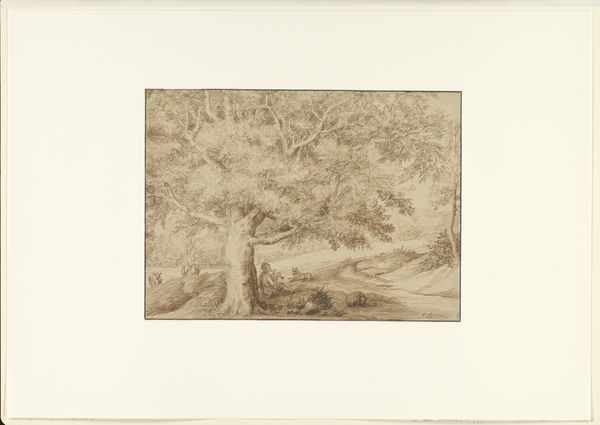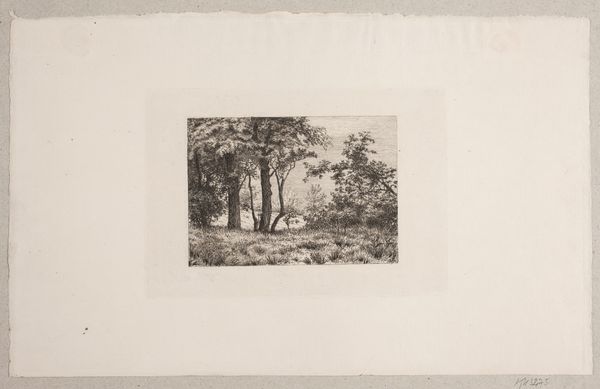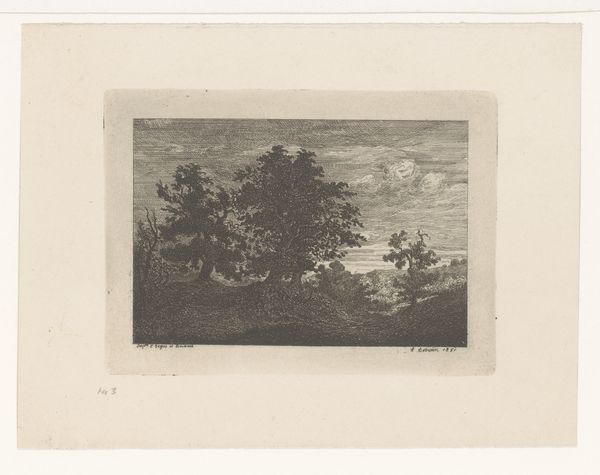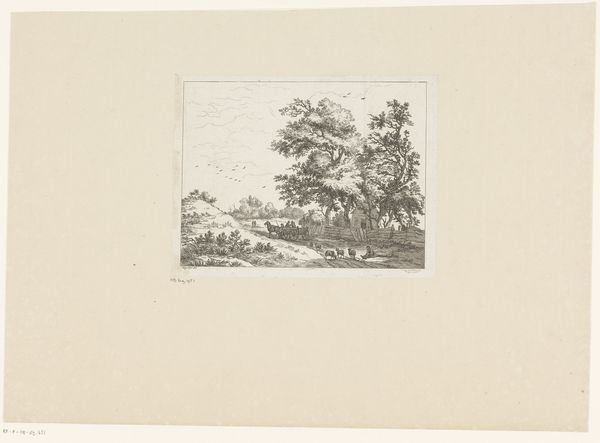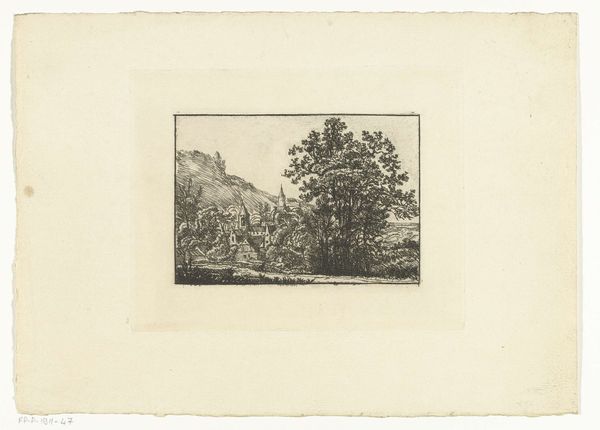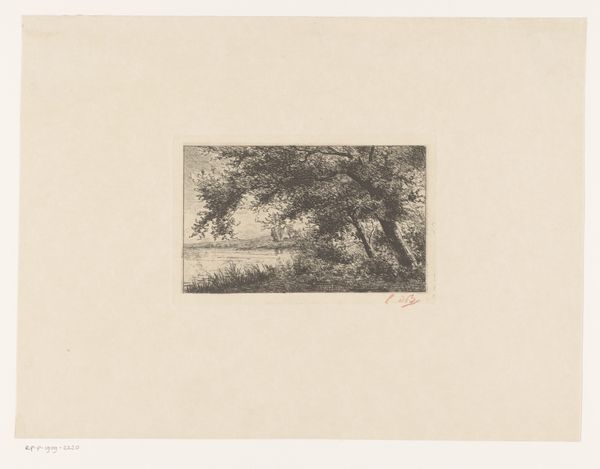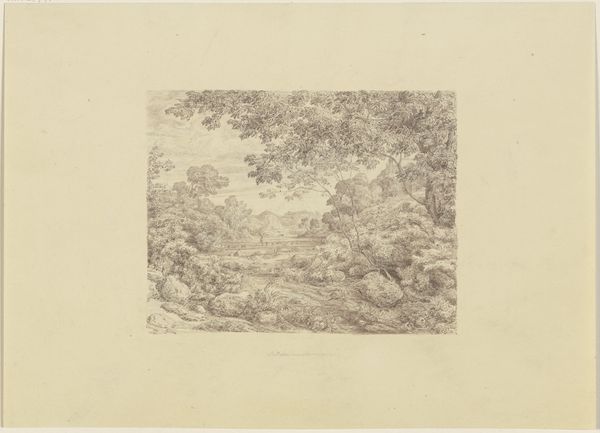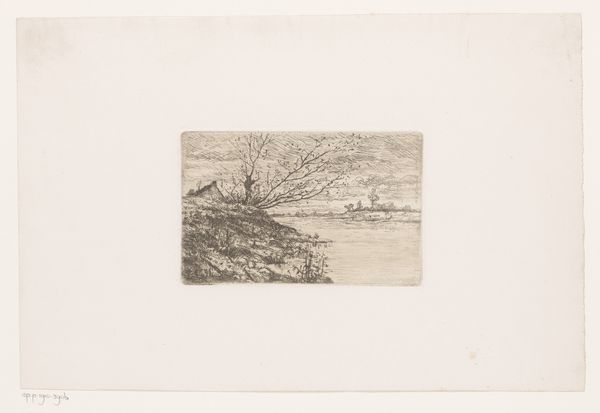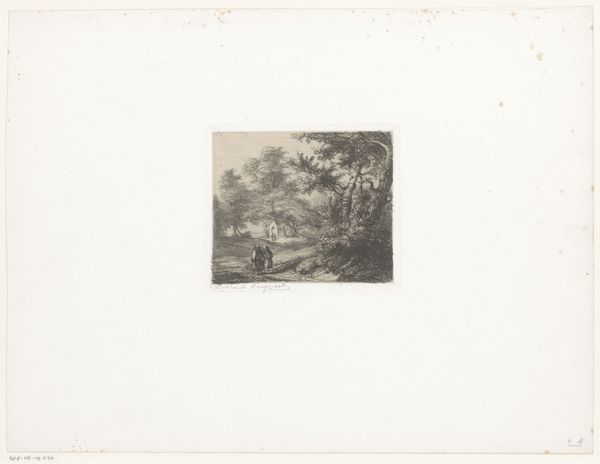
print, pencil, engraving
# print
#
landscape
#
pencil
#
engraving
#
realism
Dimensions: 111 mm (height) x 170 mm (width) (billedmaal)
Curator: Let's turn our attention to "Skarritsholm ved Skarritsø," an 1889 print by Axel Schovelin, currently held at the SMK, Statens Museum for Kunst. It's an engraving, rendered with pencil. What are your initial thoughts? Editor: The immediate impression is one of tranquility and intimacy. The soft grayscale lends it a delicate, almost dreamlike quality. There’s a wonderful interplay of light and shadow giving depth to the rural landscape. Curator: Considering Schovelin's wider artistic and political context, this idyllic scene resonates with the growing nationalist movements in late 19th-century Europe, particularly within Scandinavia. Artists often looked to the countryside as a pure, untainted reflection of national identity, in contrast to the industrializing cities. Editor: Yes, and observe how Schovelin directs our gaze. The converging lines of the dirt path draw the eye through the composition toward the horizon, a vanishing point beyond the copse of trees, enhancing that sense of depth we touched upon earlier. It’s a very effective manipulation of perspective. Curator: The work encapsulates a pivotal moment in Danish history when artists, writers, and intellectuals sought to define and celebrate a distinctly Danish identity, partially in response to external political pressures and partly as an internal re-evaluation of cultural values. Editor: It’s quite fascinating to witness how Schovelin’s use of cross-hatching in the foliage and the buildings creates varied textures that contrast sharply against the smooth areas of the paper, reinforcing both the tactile and visual interest in the landscape, which could otherwise be mistaken as a simplistic representation of nature. Curator: It highlights how these pastoral scenes became potent symbols in broader discussions about Danish identity and autonomy at the time. We can recognize the subtle assertion of a unique cultural identity through such close depictions of the natural world. Editor: Looking closely has definitely elevated my understanding beyond simply recognizing the subject. There's a real mastery of technique here, deployed to a distinct end. Curator: Absolutely. The artwork underscores how artistic expressions often operate as quiet but persuasive contributions to complex dialogues on nationhood and cultural heritage.
Comments
No comments
Be the first to comment and join the conversation on the ultimate creative platform.

